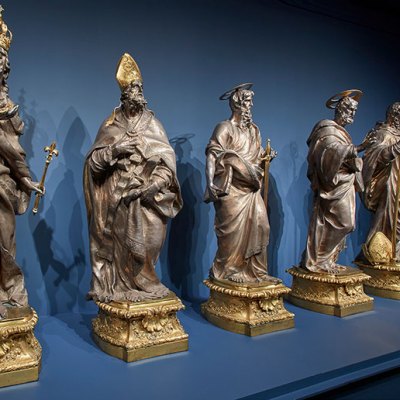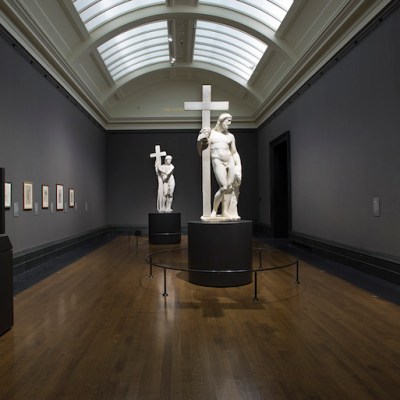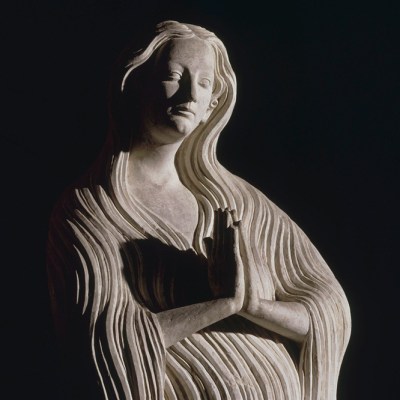By the time he reached artistic maturity, the sculptor Bertoldo di Giovanni (c. 1440–91) boasted a résumé that even his most accomplished peers must have envied. Having trained in Florence under Donatello, Bertoldo found favour early on with the Medici, eventually becoming the go-to sculptor for Lorenzo il Magnifico, as well as his confidant and curator of his garden of antiquities. It was in this garden, and under Bertoldo’s guidance, that an adolescent Michelangelo first trained his chisel on stone. Yet, however exalted his reputation among specialists and collectors, Bertoldo is still stubbornly typecast as the pupil of one titan and the teacher of another. The matter has hardly been helped by the fact that nearly all of his surviving output is dispersed across European collections. Now, thanks to an exhibition at the Frick Collection, Bertoldo can finally receive the consideration he deserves. Each of the roughly 20 objects displayed here – almost all of his extant works – reveals a different facet of his story, though they are unified by a relatively stable set of preoccupations.
One of these is scale. With several glaring exceptions, including the nearly life-size St Jerome anchoring the north gallery, the works on view are markedly smaller than the human body, and their meanings and effects dependent upon being scrutinised at close range. Like his successors in the arena of small bronze production – Andrea Riccio (c. 1470–1532) and Antico (c. 1460–1528), both subjects of important past shows at the Frick – Bertoldo made his statuettes and reliefs for display in private settings, where the blessed few could engage with their every nuance. The Frick’s intimate downstairs galleries are ideally suited to making this point, and the curators have pursued it elegantly, without overwhelming exhibition-goers with didactics and by providing space and optimal lighting conditions for us to linger on the bronzes’ delicately described textures, chromatic subtleties, and, in certain instances, tricky iconography.
Shield Bearer (c. 1470–80), Bertoldo di Giovanni. Frick Collection, New York. Photo: Michael Bodycomb

These qualities coalesce in the Frick’s own Shield Bearer (c. 1470–80), which the curators have reunited with its original pendant, usually in the Princely Collections of Liechtenstein in Vienna. From the front, the Frick example is a male nude, the club balanced on his left shoulder recalling Hercules. Walk around the statue, though, and a downy tail and pan pipes come into view, making it uncertain just who, or what, we are looking at. With these simple touches, Bertoldo appealed to an audience steeped in learned reference, and eager to have its erudition tested. As Alexander Noelle points out in his catalogue essay, Bertoldo may have designed this creature of paradox not so much to deliver one precise meaning as to serve as an occasion for thought.
Like nearly every work on view, the Shield Bearer betrays Bertoldo’s avid interest in the art of ancient Rome, which comes through in his subject matter, use of bronze, and in the types of objects he made (statuettes and medals, in particular, echoed antique precedents). But then another of the exhibition’s lessons is that Bertoldo never lapsed into passive imitation, aspiring instead to adapt Roman models to contemporary needs. One sees this perhaps most clearly in the Battle relief that begins the exhibition. Taking a fragmentary ancient sarcophagus as his starting point, Bertoldo imaginatively filled in its missing pieces, populating the metre-long relief with men and horses in a state of endless torsion. Probably mounted over a fireplace in the Medici Palace dining room, this fantasy of mastery and aggression may have inspired conversations as varied as the poses of Bertoldo’s warriors.
Battle (c. 1480–85), Bertoldo di Giovanni. Museo Nazionale del Bargello, Florence. Photo: Mauro Magliani; su concessione del Ministero per i beni e le attività culturali

Bertoldo’s playful obscurity and engagement with antiquity were not the only qualities that endeared him to Lorenzo. He was also an able propagandist for the Medici cause. Take the medal he produced to commemorate the Pazzi Conspiracy, an assassination plot against the Medici in 1478 from which Lorenzo narrowly escaped and which left his brother Giuliano dead. Rather than treat obverse and reverse distinctly, as he did in the five other medals on display, Bertoldo made the two faces mirror one another, adapting their particulars to emphasise the slaughter of one sibling and the survival of the other. In doing so, he offered a meditation on the fact that the trauma of loss and the power of resilience are two sides of the same coin. So personal is this message, in fact, that one could forget that the medal, circulated throughout Europe, was part of a campaign to win support for Florence in the war it had waged on those involved in the conspiracy, including the Papal States and Naples. That the medal might serve at once as a token of grief and an instrument for exacting retribution was an irony that Bertoldo and Lorenzo could share.
The care with which Bertoldo fashioned his sculptures to suit Lorenzo’s demands may be the crux of the exhibition, and an affirmation of how different Bertoldo was from Donatello and Michelangelo. While their lives were spent on the move, Bertoldo devoted most of his documented career to Lorenzo’s programme of cultural renewal. Whether his sculptures appealed to the private sensitivities of his patron and his circle, or shaped diplomatic relationships with powerful figures abroad, Bertoldo lent support to Lorenzo’s motto ‘Le temps revient’, that the times were changing for the better (even if that conviction proved false). Bertoldo died in 1491, while working on the monumental glazed relief that here rings three walls of the Frick’s south gallery. Within six months, his great patron and friend was also dead, and there loomed a greater tragedy: the exile of the Medici from Florence in 1494, bringing to an end the golden age that the two had sought to cultivate.
The exhibition’s many themes are incisively analysed in the catalogue, the most consequential text on the sculptor yet produced. With this volume to add to bookshelves and course syllabi, Bertoldo may become, if not quite the household name he was in his own time, at least a more familiar one in ours.
‘Bertoldo di Giovanni: The Renaissance Sculpture in Medici Florence’ is at the Frick Collection, New York, until 12 January.
From the January 2020 issue of Apollo. Preview and subscribe here.



